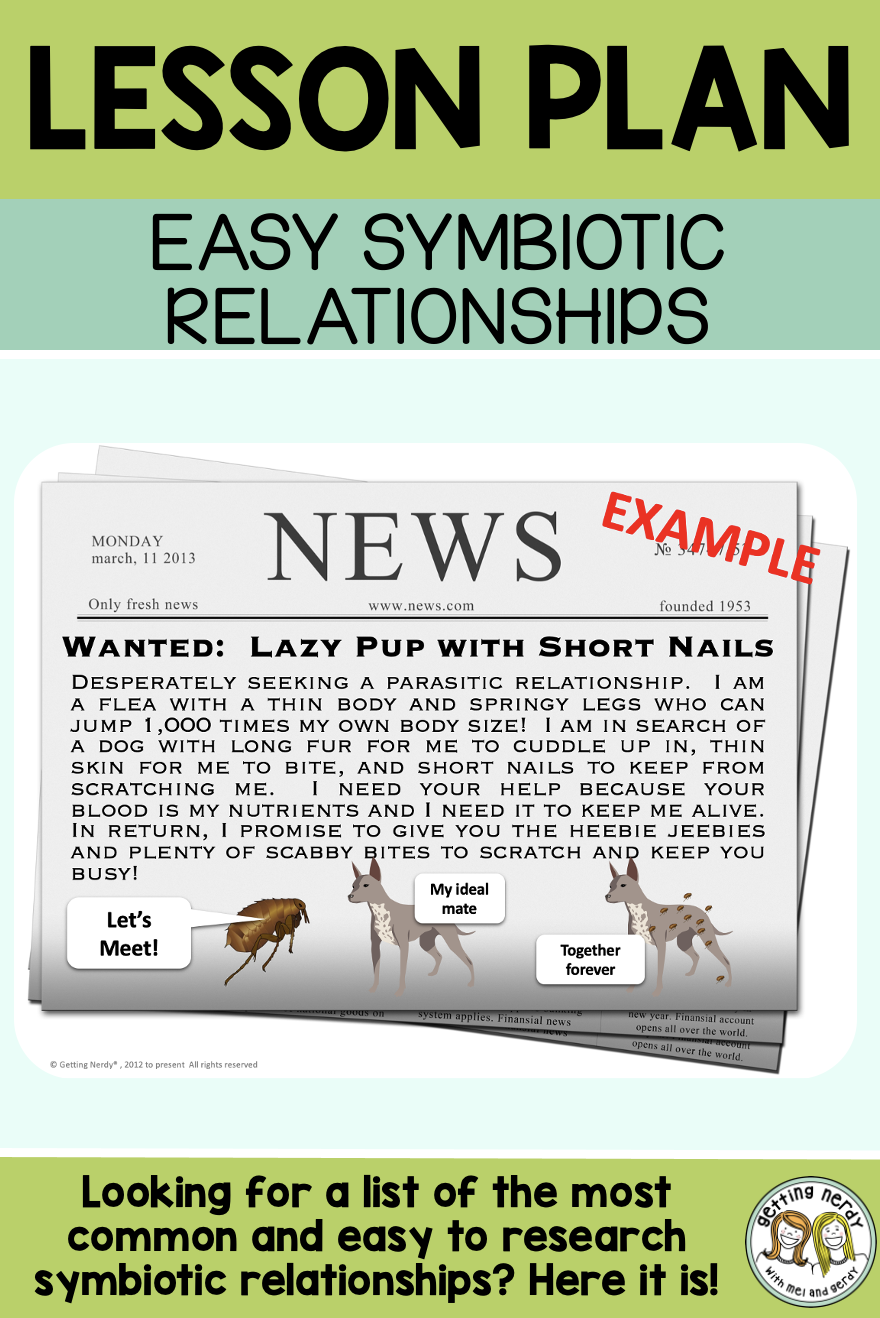
“I love the ecology unit! Thanks for all your hard work! Do you have any basic answers for the unit 3 symbiosis want ad assignment (like what type of relationship each group has)? This would help so much when it comes to grading them so I don’t have to research each one to ensure the students have it correct! Thanks for the great product!” – Amy T.
What a great question, Amy. It’s a smart idea and we honestly have no idea why we haven’t included it in the lesson before now. 😳🤓 Then we thought, it might be a great resource for any teacher out there, regardless of whether they have our activity or not, so we decided to turn it into a quick blog post. Hopefully our list will serve as a great starting point for class discussions, project ideas and a quick guide for grading all those symbiosis want ad projects.
All the critters listed below belong in the category of mutualism where each one benefits from the relationship. We always give this “two thumbs up” because everyone is happy. 👍👍
- Shark and remora
- Bacteria and Termite gut
- Ants & acacia tree
- Honeyguide bird and badger
- Shrimp and goby fish
- Sea anemone and clownfish
- Hermit crab and sea anemone
- Langur monkey and chital deer
- Sea slug and algae
- Gut bacteria and humans
- Ants and aphids
- Oxpecker and mammal
- Sloth and algae
- Fig tree and amazon fruit bat
- Olive baboon and African elephant
- Egrets and cattle
- Wombat and snails
- Coyote and American badger
- Egyptian plover and crocodile
- Ostrich and gazelle
- Bees and flowers
- Pygmy seahorse and sea fan (difficult to research)
- Fig wasp and fig (difficult to research)
- Euprymna bobtail squid and bioluminescent bacteria (difficult to research)
- Pompeii worm and thermophilic bacteria (difficult to research)
- Yucca plant and yucca moth (difficult to research)
- Leafhopper and meat ant (difficult to research)
For parasitism, one gets something while the other gets harmed. One thumb up, one thumb down. 👍👎
- Mistletoe and hardwood
- Tapeworm and mammal
- Brown-headed cowbird and songbird
- Cuckoo and warbler
- Bird mites and humans
- Mosquitos and humans
- Pinworm and humans
- Botfly and mammal
- Lice and human
- Deer and tick
- Bedbugs and humans
- Varroa destructor and honeybee (difficult to research)
And last but not least, commensalism. In this relationship, one organism benefits from the relationship while the other is like “meh”…whatever. We give one thumbs up, and one to the side. Meh… 👍🤷♀️
- Barnacles and whales
- Pearlfish and sea cucumber
- boxer crab and anemone
- Hermit crab and snails
- Orchids and trees
- Spanish moss and trees (difficult to research)
It’s an unbalanced list for sure – it’s a lot easier to find beneficial relationships than commensalistic ones and most of the parasitic relationships can be pretty gruesome. One of our faves is pinworms and humans, because students are always flabbergasted over the fact that the worms live in the human anus and that lots of kids have them when they’re little. 😳 If you’re looking to add to your symbiosis library, here’s a great article that can be selected for the appropriate reading levels, offered up by National Geographic: Symbiosis: The Art of Living Together.
Anywhoooo… 😂 we hope this little list helps. If you wanna grab this lesson for yourself, you can check it out in our Ecology unit here. Here’s wishing you a mutualistic relationship with your students that lasts you all school year long. Happy teaching!
Inspire Students. Love Teaching.
We have everything you need to successfully teach life science and biology. Join over 85,000 teachers that are seeing results with our lessons. Subscribe to our newsletter to get a coupon for $5 off your first order!

